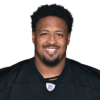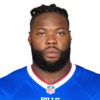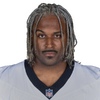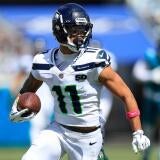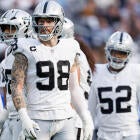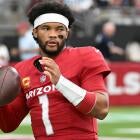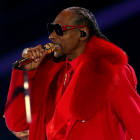The ultimate NFL midseason roster: 53 players from 32 teams, under the cap
Aaron Rodgers is out, Derek Carr is in at QB in version 2.0 of our 2016 roster project

A 53-man roster under the salary cap using actual cap numbers with certain parameters, which are below, was created at the start of the season. The composition of the roster has changed significantly in a second try at the midpoint of the season because of injuries and 2016 performances.
Aaron Rodgers is no longer the choice at quarterback. He was getting the benefit of the doubt for a subpar 2015 season (by his standards). The two-time NFL MVP hasn't fared much better this season with his favorite target, Jordy Nelson, returning from an ACL tear that kept him out action last year.
The 2016 season is lost for three-time NFL Defensive Player of the Year J.J. Watt. He suffered a setback when he came back too quickly from the back surgery he had right before the start of training camp. Replacing Watt has created a domino effect on the defense where many of the selections are different.
Guidelines used to build this roster
1. Keep it under the cap: The salary cap for the roster is $161.66 million. The actual NFL salary cap is $155.27 million for this season. The number being used is the league's average adjusted salary cap according to NFLPA data. Each NFL team's working salary cap varies largely because unused cap room can be carried over from one year to the next.
2. Rookies are part of the equation: The NFL Draft is an essential element of roster building for teams so it is here also. One player from each round of the 2016 draft must be on the roster. All rookies are fair game as backups regardless of their role with their respective teams. The number requirement drops by one player for each year of the preceding three drafts (2013-2015). There's also a limit of one player per round. Thus, only four 2013 draft picks are required. The 2014 first round is particularly strong with Pro Bowl players Odell Beckham Jr., Aaron Donald, Khalil Mack and Zack Martin. The round limitation forces a choice to be made between them. There's one other draft pick constraint. Only one 2012 first-round pick that signed a contract extension with his team is allowed, which means Fletcher Cox, Luke Kuechly and Harrison Smith can't be teammates.
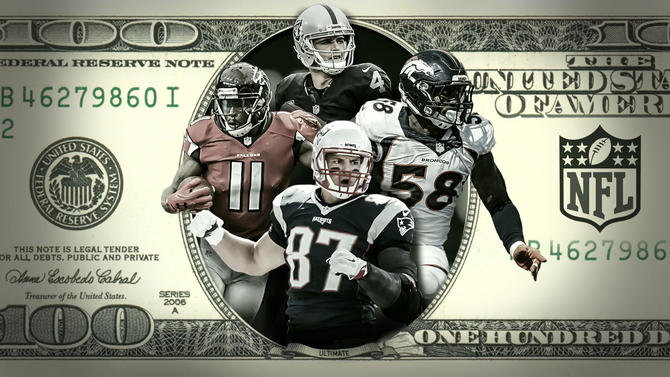
3. The backups are really backups: The backups at each position are limited to players that aren't established starters. Young veterans cracking the lineup for the first time this season are no longer allowed to be backups. This prevents players such as running back Jay Ajayi (Miami Dolphins) and cornerbacks DeShawn Shead (Seattle Seahawks) and A.J.Bouye (Houston Texans) from being depth. Players competing for starting jobs, or where there's a "by committee approach" at a position, usually running back, are acceptable. A backfield containing David Johnson and Le'Veon Bell is prohibited since both are workhorse or every-down running backs. There's one big allowance being made defensively. Three starting cornerbacks are acceptable without sacrificing a starter in a traditional base defense since five or more defensive backs were used over 60 percent of the time in 2015, according to Pro Football Focus. The result is 12 defensive starters.
4. Tags, too: Choosing a player that was given a franchise or transition designation in 2016 is optional. However, only one player receiving a 2016 designation can be selected.
5. All 32 teams represented: There must be one player from each NFL team. This twist made the selection process even more difficult.
An attempt to maintain positional integrity was made. Players weren't moved within their position group without evidence of playing elsewhere during their career. For example, players on the left side of the offensive line weren't considered for the right side of the offensive line. The reverse is also true.
Here's the team I assembled with some of my thoughts behind the selections. The 2016 salary cap number for each player is included.
Offense
Salary cap number: $1,465,037
Carr has played his way into the MVP discussion and helped put the Raiders in position for their first playoff berth since 2002. It is impossible to pass up such an inexpensive, improving quarterback because of the roster flexibility the 2014 second-round pick creates.
Salary cap number: $594,843
A cost-effective low-mileage lead ball carrier was a necessity. The 2015 third-round pick has arguably become the NFL's best dual-threat running back in his breakout season. Johnson leads in the NFL with 1,112 yards from scrimmage. The NFC Offensive Player of the Month for October is also fourth in the NFL with 705 rushing yards.
Salary cap number: $11,884,503
Brown remains the best wide receiver in football despite his numbers taking a slight dip. This is partially because of the lack of another consistent receiving option with Martavis Bryant serving a season-long suspension for violating the NFL's substance abuse policy. Nonetheless, Brown leads the NFL in receptions (430), receiving yards (5,708) and touchdown catches (37) since the start of the 2013 season.
Salary cap number: $15,906,240
There isn't a wide receiver having a better season than Jones. He has 51 catches for an NFL-leading 980 yards and five touchdowns. Cincinnati Bengals receiver A.J. Green received serious consideration for this spot.
Salary cap number: $2,431,522
An inability to get on the same page with big-money free-agent passer Brock Osweiler isn't penalizing Hopkins because he was extremely productive in 2015 (111 catches/1,521 yards/11 touchdowns) despite catching passes from a bunch of mediocre-at-best quarterbacks (Brian Hoyer, Ryan Mallett, Brandon Weeden and T.J. Yates). It wouldn't be the case if Hopkins wasn't so affordable as a 2013 first-round pick still playing under his rookie contract.
Salary cap number: $6,624,990
Gronkowski gets the nod over the Panthers' Greg Olsen despite being slowed early in the season with a hamstring injury because he is the ultimate mismatch in the passing game when healthy. Picking Gronkowski means an effective pass-catching backup is a must. Unlike most great pass-catching tight ends, Gronk is also an excellent blocker. Gronkowski is averaging 22 yards per catch this season, which is an absurdly high number for a tight end.
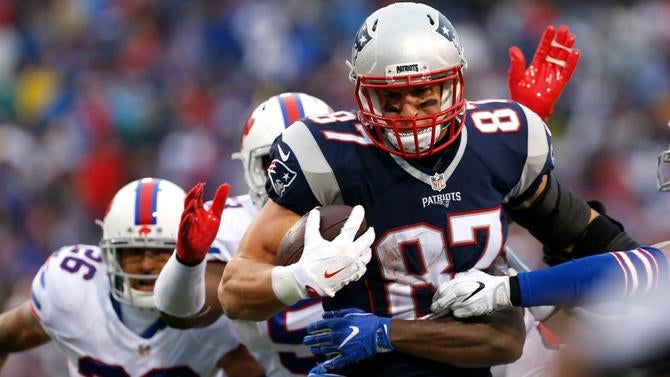
Salary cap number: $9.5 million
The every team representation requirement swings the choice from Tyron Smith (Dallas Cowboys) to Thomas. The 2007 third overall pick is in a position to be named first-team All-Pro for the seventh time in the past eight seasons.
Salary cap number: $2,422,906
Foster is the unheralded member one of the NFL's better guard tandems. He is overshadowed by All-Pro right guard David DeCastro. Foster hasn't given up a sack this season.
Salary cap number: $530,850
Paradis has really come into his own. The 2014 sixth-round pick is on track to challenge Travis Frederick, Rodney Hudson and Alex Mack for All-Pro honors at the end of the season.
Salary cap number: $4,011,662
The 32-year-old has been the hallmark of consistency for interior offensive lineman. He is the pick over Zack Martin (Cowboys) despite missing a couple of games because there are better options for a 2014 first-round pick (Aaron Donald, Khalil Mack).
Salary cap number: $864,394
2015 fifth overall pick Brandon Scherff was drafted to play right tackle. It speaks volumes that Scherff is playing right guard because of Moses, who has gotten better this season.
Defense
Salary cap number: $5,006,045
Graham has really taken to new defensive coordinator Jim Schwartz's 4-3 defense. According to Pro Football Focus, Graham is fourth in the NFL with 45 quarterback pressures (combined sacks, quarterback hurries and quarterback hits).
Salary cap number: $2,770,790
Donald drew comparisons to Hall of Famer John Randle before the 2014 NFL Draft because of his ability to make explosive plays as an undersized interior defensive lineman. He hasn't done anything to dispel this notion since being selected 13th overall. Donald is a leading candidate to win his first NFL Defensive Player of the Year award.
Salary cap number: $6.35 million
Joseph took his game to a different level last year by becoming the NFL's premier run-stuffing interior lineman. That hasn't really changed this season.
Salary cap number: $5.812 Million
Uncertainty about the amount of time Michael Bennett will miss because of his knee injury led to a change. A third Pro Bowl berth is a possibility for Jordan. He'll become an interior rusher on passing downs as he has done on numerous occasions with the Saints.
Salary cap number: $1,253,900
Brown returns to the position he manned in 2012 and 2013 when the Tennessee Titans were a 4-3 team. He has been a playmaking machine this season. His 89 tackles lead the NFL. Brown also has three sacks, which are best among NFL inside linebackers.
Salary cap number: $6,005,460
Kuechly has set a high bar at inside linebacker. He was the 2012 NFL Defensive Rookie of the Year. Kuechly also kept J.J. Watt from a four-year reign as NFL Defensive Player of Year by winning the award in 2013.
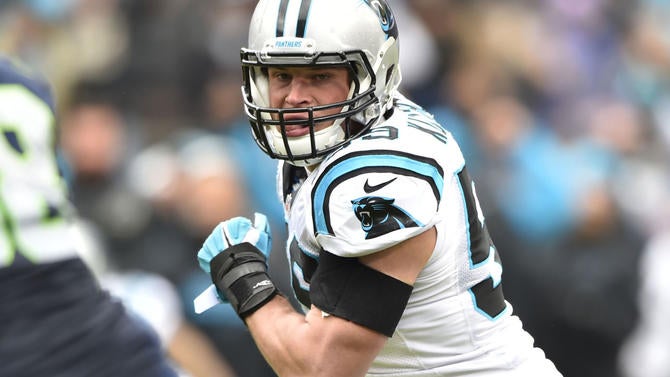
Salary cap number: $11.5 Million
The Super Bowl 50 MVP has picked up where he left off last season. Miller is second in the NFL with 9.5 sacks and is in a battle with Donald for Defensive Player of the Year.
Salary cap number: $13,072,379
Peterson is the pick for shutdown cornerback over Richard Sherman because he is having a better year. Opposing quarterbacks are completing 50 percent of passes when targeting Peterson for a 62.4 passer rating, according to Pro Football Focus. Peterson's cap number being also approximately $1.7 million lower than Sherman's doesn't hurt either.
Salary cap number: $9 million
The NFL's most underrated cornerback will play on the outside in the traditional base defense. Harris will move to the slot where he excels in multiple wide receiver sets.
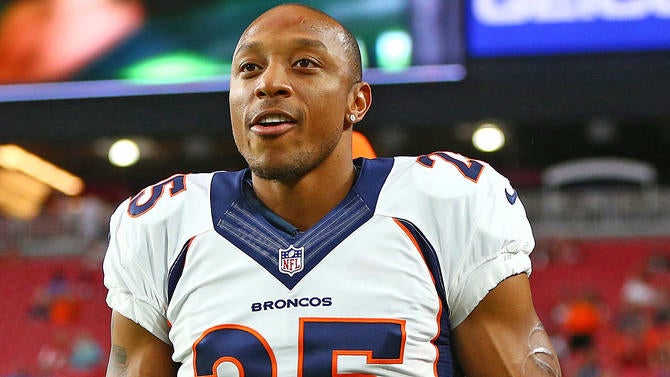
Salary cap number: $3,756,240
Weddle is having a big bounce-back year after the Chargers decided to let him leave in free agency. His five-year streak of earning All-Pro honors was snapped in 2015. Listed at strong safety with the Ravens, Weddle returns to the customary free safety position he manned in San Diego.
Salary cap number: $1,396,886
The switch from free safety to strong safety has done wonders for the 2015 second-round pick. Collins is tied for the NFL lead among safeties with three interceptions. His three sacks are an NFL best for safeties.
Specialists
S alary cap number: $3,755,460
The 43-year-old Vinatieri, who is in his 21st NFL season, hasn't missed a kick all season. He is a perfect 19 for 19 on field goals, including five from beyond 50 yards, and 24 for 24 on extra points. The ageless wonder recently set an NFL record with 43 straight field goals made. The streak is now at 44.
Salary cap number: $1,220,925
Martin leads the NFL with a net punting average of 45.4 yards. The 2013 fifth-round pick will also handle kickoffs.
Salary cap number: $946,240
Cox earned a Pro Bowl berth in 2015.
KR/PR: Andre Roberts-Detroit Lions ($680,000)
The reserves
Salary cap number: $545,848
The Cowboys are no longer doomed when Tony Romo is hurt because of the 2016 fourth-round pick. A general principle in sports is players don't lose starting jobs because of injury. It may not be applicable in Dallas once Romo is healthy because of Prescott's surprising play in the Cowboys' 7-1 start to the season. A third quarterback will be on the practice squad.
Running Backs
Theo Riddick, Detroit Lions ($1,791,100)
Jordan Howard, Chicago Bears ($512,006)
Christine Michael, Seattle Seahawks ($731,045)
Aaron Ripkowski, Green Bay Packers ($541,396)
Howard will get the bulk of the carries in relief of Johnson. The 2016 sixth-round pick has taken advantage of an injury to Jeremy Langford in replacing Matt Forte, who left in free agency. Riddick will primarily see duty as the third-down back in conjunction with Johnson. There will be situations when both are on the field as the same time. Michael, who has been filling in for an injured Thomas Rawls in Seattle, provides depth as ball carrier. Ripkowski is the lone fullback.
Wide Receivers
Michael Thomas, New Orleans Saints ($930,722)
Cecil Shorts, Tampa Bay Buccaneers ($1.05 Million)
Andre Roberts, Detroit Lions ($680,000)
Thomas appears to be a lock to make the All-Rookie team but he's the fourth wide receiver here. Shorts brings experience in five-receiver sets. Roberts' primary contribution will be as a return man.
Tight Ends
Vernon Davis, Washington Redskins ($2,381,250)
Logan Paulsen, Chicago Bears ($600,000)
Davis picked up the slack for Jordan Reed when he missed two games because of a concussion. Paulsen functions as a blocking tight end.
Offensive Line
Jon Feliciano, Oakland Raiders ($646,403)
Cameron Fleming, New England Patriots ($606,240)
Andrew Tiller, San Francisco 49ers ($606,045)
Eric Winston, Cincinnati Bengals ($684,485)
Versatility was a primary consideration of offensive line depth. Tiller was recently replaced at right guard by 2016 first-round pick Joshua Garnett. He can play either guard spot. Fleming has performed capably this season at both tackle positions. A guard by trade, Feliciano backs up Rodney Hudson in Oakland. Cincinnati is rotating Winston, an 11-year veteran, with 2015 first-round pick Cedric Ogbuehi at right tackle.
Defensive Ends
Joey Bosa, San Diego Chargers ($4,704,303)
David Irving, Dallas Cowboys ($531,045)
Yannick Ngakoue, Jacksonville Jaguars ($664,044)
A hamstring injury after a lengthy contract dispute delayed the start of Bosa's NFL career. He has quickly become a leading Defensive Rookie of the Year candidate despite missing the first four games. Irving earned NFC Defensive Player of the Week honors for Week 6 after forcing three fumbles, recovering a fumble and getting a sack in just 19 snaps against the Packers. Ngakoue, a third-round pick this year, and Bosa are tied for the NFL lead among rookies with four sacks.
Defensive Tackles
Karl Klug, Tennessee Titans ($2,356,045)
Michael Pierce, Baltimore Ravens ($453,333)
Klug serves as a rotational interior pass rusher and the Titans' representative. Pierce, an undrafted free agent this year, has shown some ability to rush the passer and stuff the run in limited snaps.
Linebackers
Elandon Roberts, New England Patriots ($475,089)
Shaquil Barrett, Denver Broncos ($530,850)
Bruce Carter, New York Jets ($685,850)
Head coach Bill Belichick's comfort with Roberts, a 2016 sixth-round pick, led to New England trading All-Pro linebacker Jamie Collins to Cleveland before last week's trading deadline. Barrett is becoming a more complete linebacker after strictly being used as a pass rusher last season. Carter started 32 games in his final three years in Dallas before a disappointing one-year stint with the Buccaneers last season.
Cornerbacks
Marcus Peters, Kansas City Chiefs ($2,181,533)
Brian Poole, Atlanta Falcons ($451,166)
Lorenzo Doss, Denver Broncos ($580,153)
Corey White, Buffalo Bills ($685,850)
Peters is really the 12th starter. The 2015 Defensive Rookie of the Year was the NFL co-leader with eight interceptions last season. He's tied for the NFL lead once again with five interceptions in his sophomore campaign. Peters will see plenty of time on the outside when three or more wide receivers are on the field. Poole is a pleasant surprise for the Falcons, earning the nickel cornerback role as an undrafted rookie. Doss has been solid when injuries have increased his playing time. White is starting to get more action because of a prolonged slump by Ronald Darby.
Safeties
Michael Thomas, Miami Dolphins (681,045)
Jayron Kearse, Minnesota Vikings ($466,056)
Thomas is a special teams standout who has been forced into more duty because of Reshad Jones' season-ending shoulder injury. The playing time Kearse recently received while Vikings starting strong safety Andrew Sendejo was out with an ankle injury has been a good learning experience.
Final Thoughts ... and numbers
Total salary cap room used (53 Players): $155,836,569
Remaining salary cap room: $5,823,431
Offense (25 Players): $68,543,517
Defense (25 Players): $81,370,427
Specialists (3 Players): $5,922,625
All of the cap room wasn't used. A nice cushion was left for a full practice squad of 10 players (approximately $1.2 million for the season) and to sign players when the inevitable injuries happen.
Choosing a Pro Bowl-caliber low-cost quarterback dramatically altered the selections because greater cap resources could be used on the rest of the roster. Otherwise, a pair of wide receivers with big cap numbers, Brown and Jones, wouldn't have been possible.
The Seahawks and Ravens led the way with four players each in the initial version. Denver's five players are the most this time. The Ravens are second with four members but two players are different. The Seahawks only have one representative now.
Long-range planning wasn't taken into account so worrying about 2017 salary cap obligations, the amount of cap room that could be carried over, expiring contracts and drafting players that might develop into starters in the future wasn't necessary. Different choices would have been if these aspects had been a consideration.













